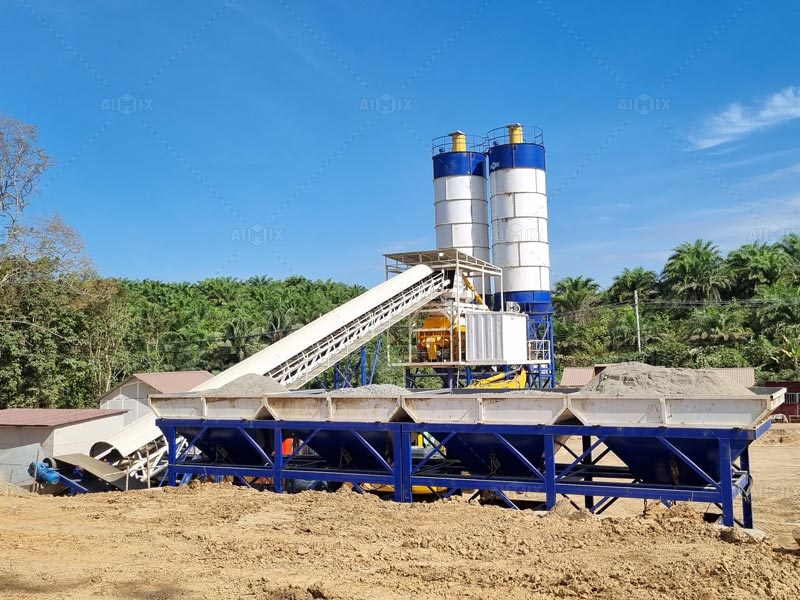In the world of construction, the efficiency and quality of concrete production are crucial to meeting project timelines and structural integrity. But have you ever wondered what a typical day looks like inside a ready mix concrete plant? From receiving raw materials to discharging finished concrete, every step is designed for precision, speed, and safety. Whether it’s a large concrete batching plant or a portable concrete plant on-site, the process follows a coordinated workflow that ensures consistent output.
Receiving and Storing the Raw Materials
The day begins with receiving essential materials: aggregates (sand, gravel, crushed stone), cement, water, and sometimes additives. Aggregates arrive by truck and are unloaded into separate storage bins. Cement is delivered in bulk and stored in silos, while water is stored in large tanks. At this point, a modern concrete batching plant uses sensors and automated systems to monitor inventory levels and schedule resupplies.
Weighing and Batching
Once an order is confirmed, the plant's control system triggers the batching process. Each material is weighed according to the specific concrete mix design. This step is where precision matters most. In a high-efficiency ready mix concrete plant(plantas para concreto premezclado), automated batching systems ensure exact quantities are measured to produce concrete that meets required strength and workability standards.
Automation in the Batching Process
Automation plays a key role in enhancing productivity and reducing human error. Whether it’s a fixed or a portable concrete plant, operators use computer systems to control batching. Real-time feedback helps detect inconsistencies in material flow or weight, making immediate corrections possible. This system also logs all batch data for quality control and customer reporting.
Mixing the Concrete
After batching, the weighed materials are transferred to the concrete mixer. The mixer blends the ingredients uniformly, usually within 30 to 90 seconds, depending on plant size and mixer type. Some plants use twin-shaft mixers for faster and more homogenous mixing, especially in high-volume production environments. For projects that require mobility, a portable concrete plant can perform mixing directly on the jobsite, saving time on transportation.
Types of Mixers Used
Mixers vary based on plant design and project requirements. Twin-shaft mixers are ideal for large-scale ready mix concrete plant operations, while pan mixers or drum mixers may be used in smaller settings or concrete batching plant(planta dosificadora de hormigon) variants designed for mobility or compact use.
Quality Control and Testing
Before discharge, quality control teams often take samples to verify slump, temperature, and air content. This ensures that each batch meets the required specifications. Plants may also conduct compressive strength tests by casting sample cubes or cylinders that are tested after curing.
Discharging and Delivery
After passing all quality checks, the concrete is discharged into transit mixers or trucks for delivery. Dispatchers coordinate the schedule to ensure the concrete reaches the site within its workable time frame. In some projects, particularly remote ones, a portable concrete plant(planta dosificadora de concreto portatil) is used to produce and discharge concrete on-site, minimizing transportation issues and delays.
Environmental Considerations
Modern plants also focus on sustainability. Dust collectors, water recycling systems, and energy-efficient components are commonly used to reduce environmental impact. These measures help ensure that even the most productive concrete batching plant operations comply with environmental regulations.
Conclusion
A day in a ready mix concrete plant is a finely tuned process of coordination, automation, and quality control. From raw material handling to final discharge, every step is critical in delivering high-performance concrete. Whether operating a large-scale facility or a mobile setup, understanding this workflow helps construction professionals select the right solution—be it a stationary or portable concrete plant—for their project needs.


Comments
No comments yet. Be the first to react!